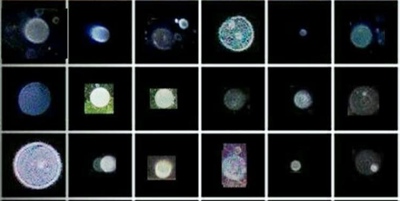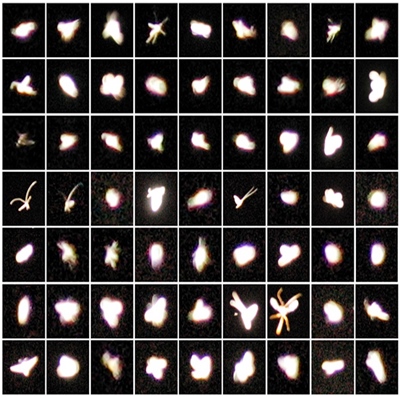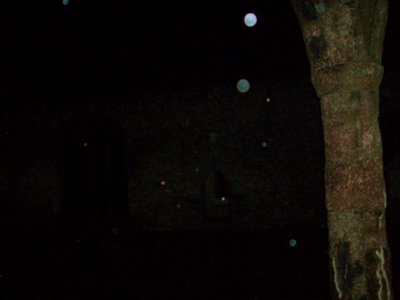We are all aware of “orbs” that have appeared in many digital photographs and video footage.
What are Orbs?
Many individuals and paranormal TV shows persist in purveying the myth that they are the result of spirits that have been captured, however the truth of the matter is these are easily debunked as caused by environmental influences.
There are a variety of factors to be considered in this regard. Many renowned paranormal researchers have discounted orbs as being paranormal for many different reasons. Here are a few things that need to be considered and ruled out.
On rare occasion an orb captured on film will be of interest if it is shown to manifest, radiate its own light, either move directly/leave a person and affect them in some way or follow a distinct path/route as captured in this clip of footage that was recorded in a locked of tunnel where numerous unexplained noises were heard. Interestingly this particular orb also move towards a doorway.
Equipment Check
It is always a good idea to perform a check of all equipment prior to an investigation. Always check that camera lenses are free from smudges and dust. Always avoid touching lenses with fingers as the natural oils can leave a smudge residue that could cause orbs and other anomalies to appear in pictures. Even if you capture an orb with a pristine clean camera, it doesn't mean it is paranormal. Always consider some of the other factors before submitting orb pictures as evidence.
The common factor for orbs appearing in photographs and on video are dust and debris. This can also include dead skin cells, dirt, pollen, animal dander, hair, decomposing insects, dust mites, waste from dust mites, lint, insulation from the building, etc.,
Dust Particle
Dust appear in film as orbs because of what is called the retro-reflection of light off the dust particle. As investigations are carried out at night there might be flashlights involved, flash from cameras, infrared (IR) lights, and natural lights from the etc., that can light to reflect. It doesn't take much light to reflect from these dust particles and cameras are quick to pick it up. This can also be captured day or night in addition these can appear in a variety of different ways and sizes from large to small depending in where the particles are in relation to the lens. The larger the object, the closer it is to lens.
Commonly people will argue that there was no dust in the area but that cannot be proven as it may not be possible to see dust particles with the naked eye it does not mean that dust particles are not present just that they are not visible as dust can be a variety of different things. Dust particles can be carried on clothing without even realizing it or may have settled on flooring, seating etc., Have you ever seen particles glisten in a beam of sunlight?
When you consider that a human body sheds 30,000 to 40,000 dead skin cells every hour and then multiply that by how many people are at the location and how long they stay in the specific location and the odds of capturing an orb or anomaly are greatly increased.

Clear enlarged examples of dust particles photographed as orbs and mistaken for spirit energies

Above is how household dust and dirt particles often appear in photographs and video footage
Here we see a woman sitting on the bed with a big orb behind her, which incidentally has a smiley face in it, which links into pareidolia. Our brains are wired to see and recognise faces.

We often get the comment on video footage thats we receive from people that they believe it’s not dust because of its erratic movement and changing of direction, but you have to factor in the many air currents that are moving round a room at any given time which would cause particles of dust to move and change direction rapidly.
Dust orbs can appear as translucent to solid depending upon the type of particle, proximity to the camera lens, as described below by experts from the Sony Cyber Shot handbook explaining this effect.


Copy from a Sony handbook advising on how to reduce and prevent capturing unwanted orbs in photographs
Certain camera set ups are more likely to capture such artefacts more than others due to the flash’s proximity to the lens. When the flash is close to the lens, the cone of light that it puts out intersects with the conical-shaped coverage of the lens. This overlapping area is where dust particles (or airborne water droplets, tiny insects etc) will become 'orbs'.

When the flash is close to the lens, the cone of light that it puts out intersects with the conical-shaped coverage of the lens. This overlapping area is where dust particles (or airborne water droplets, tiny insects etc) will become 'orbs'.

To negate this effect, it is best practice to mount an external flash where possible or an IR illuminator away from the lens or just discount the artefacts that occur as particles. DSLR digital camera with a large flash that sits up about 20cm above the lens the SLR shows nothing. This is because the dust particles that are close to the flash are actually way above the lens, out of its coverage area. Contributing factors include the JPEG file compression employed by most compact cameras and the application of digital sharpening in the camera. These processes, as well as the optical quality of the lens, enhance colours and patterns "within" the orb, making them seem more than what they are.

The use of a flashgun on an SLR camera eliminates the capture of “orbs” due to the distance of the flash from the lens
If you are investigating a location that is being renovated or there is a lot of dirt and debris around you can expect to a lot of these artefacts on your images.

You will also see orbs drifting across in video footage, but usually only when there is a light source (Infra-Red or visible) situated close to the video camera lens. In the case of IR surveillance cameras, the IR LEDs surround the lens. These 'orbs' are usually caused by dust stirred up by passing humans, and appears as orbs up to several minutes later, or completely randomly. Sometimes the orbs have a flight path that makes them appear to follow people; but, as with still-photo orbs, they are really much closer to the camera than they seem. The apparent size of the orbs, and their flight paths, is an illusion caused by the compression of 3D visual space down to 2D. Usually dust orbs are not bright, but this doesn't mean they can't be.
Incorrect camera settings or the motion of an artefact, can also produce some strange image anomalies. Orbs can also be a retro-reflection of light off an object, but light itself can cause orbs in photographs such as a light source like light poles or the reflection of the camera's flash. Also, try to rule out another person's flashlight in the distance or reflecting off a wall, window, or door.

Even improper camera settings can cause anomalies
Insects
Another familiar cause are insects, naturally drawn to any light sources, even infrared light, they often appear as solid bright orbs of light. Again, people will argue that there weren’t any insects around at the time of shooting. This cannot be guaranteed as many insects are tiny and go unnoticed, such as gnats and fruit flies unless there are several flying together.
Bugs can take many strange forms on an image but have caused more controversy on footage with the so-called phenomenon of Rods with filming in low light or using IR. The camera can only see at 30 frames per second and in these conditions, it can distort and elongate the appearance of an insect as it moves through the air.

Bugs and insects tend to take on a completely different appearance when illuminated by camera flashes and often appear as elongated orbs when in-flight due to the speed of flight, the cameras shutter speed and aperture that creates an orb that appears to have a tail streaming behind it.
There was a sort clip that was taken at the New Palace Theatre on the security camera which they thought was a ghost and asked us for our opinion as we were due in to investigate. Our debunk of this was featured in the Plymouth Herald and our analysis is that it was a moth. The individual wing beats could be seen within the effect of the motion blur, and it was illuminated and attracted to the IR light around the camera.
Here is a short clip from the History channel who set up an experiment to explain and debunk this phenomenon.
Moisture Particles
The atmosphere is filled with moisture molecules that cannot be seen with the naked eye but can be captured by a camera lens. Some moisture orbs are octagon or spherical but not all, they can be a variety of shapes and colours as well. Moisture refracts light like a prism causing a rainbow of colours. However, not all water molecule orbs have colours.

Moisture orbs are coloured as a result of light being refracted through a transparent substance and therefore appearing in colours like those witnessed in a rainbow.
Here are some images we captured at Holy Trinity church with moisture particles. Obviously note if it’s raining, the temperature and humidity. Now, if you dont have access to a hydrometer or have a temperature gauge that will give you the humidity you can check this with a simple trick hold you camera up and take a shot and look sideways into the beam and you will be able to see the illuminated moisture or dust partials in the flash.



Light
Orbs can also be a retro-reflection of light off an object, but light itself can cause orbs in photographs such as a light source like light poles or the reflection of the camera's flash. Also, try to rule out another person's flashlight in the distance or reflecting off a wall, window, or door.
In physics, the phenomenon that creates orbs in photography is referred to as back-scattering. Back-scattering is a diffuse reflection of waves, particles, or signals traveling back to the direction it came from. So, this phenomenon can occur with more than just dust, insects, moisture, and light.

